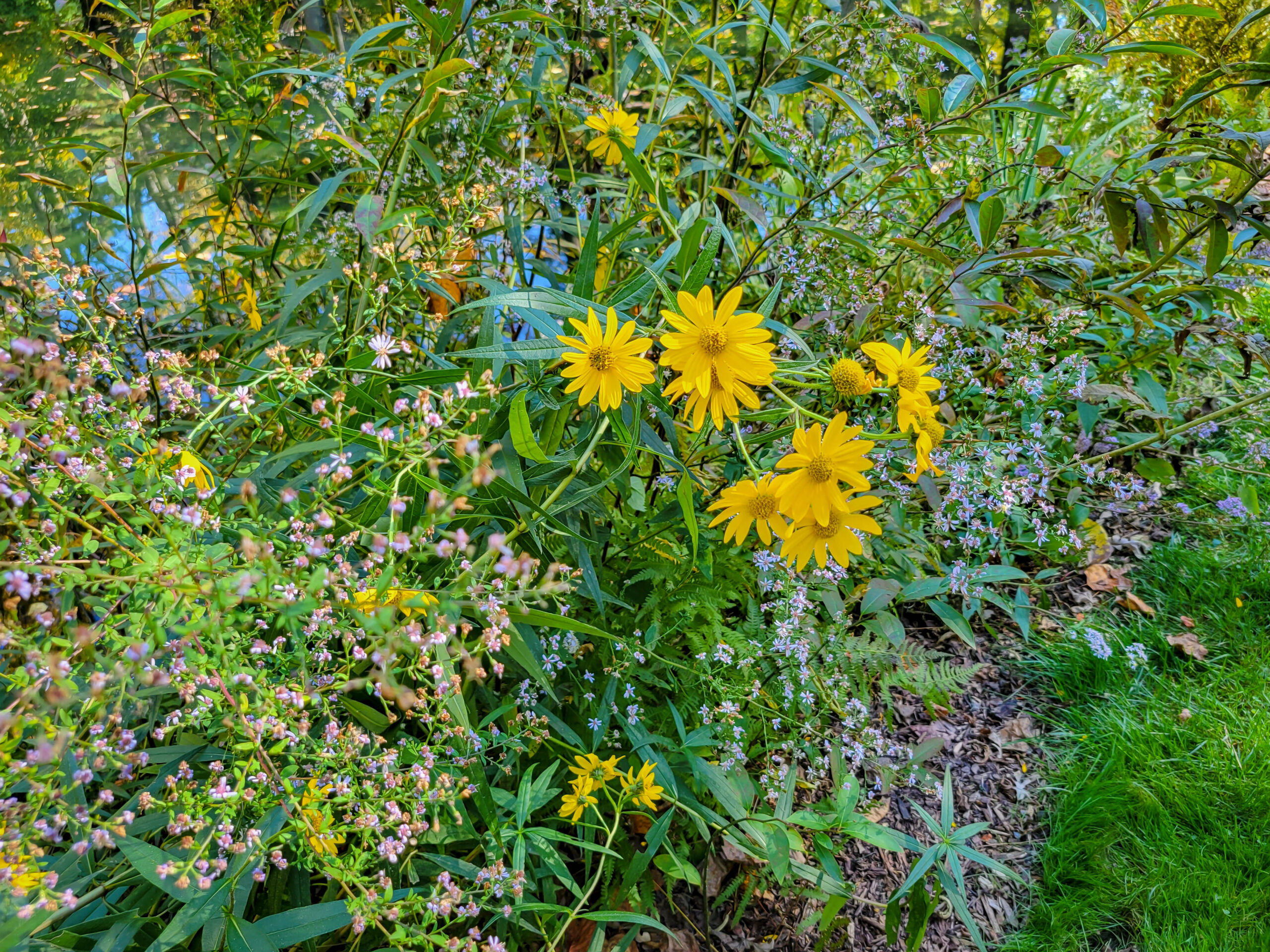
Mount Cuba Center
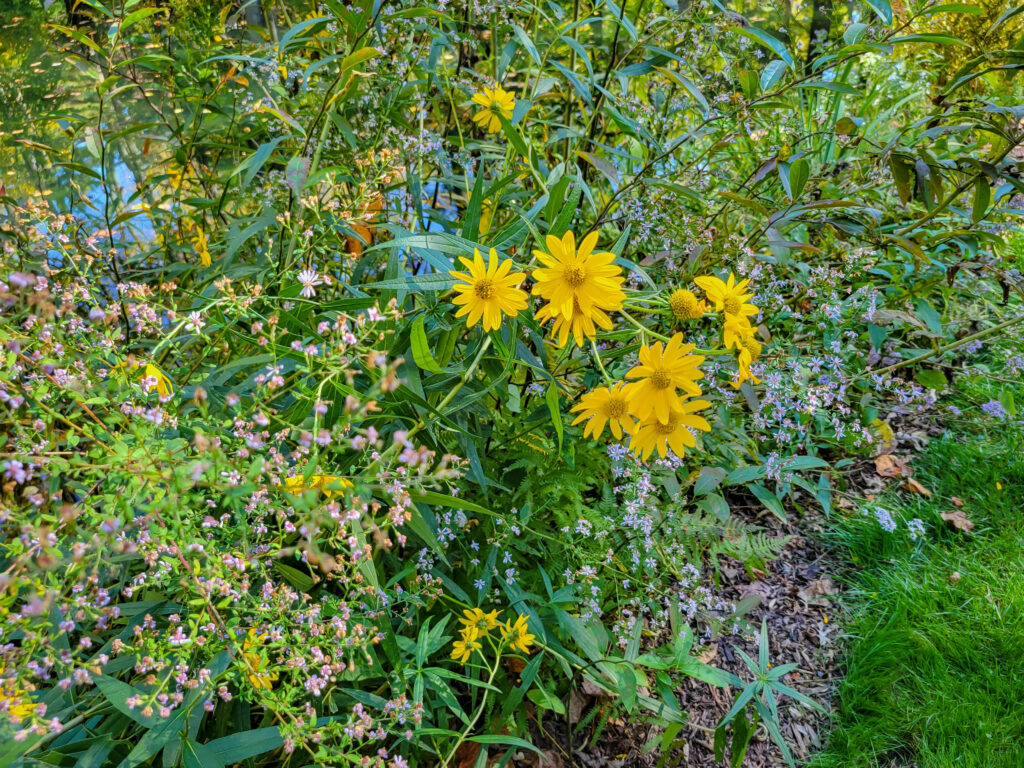
Chris likes to watch British TV dramas on Masterpiece Theater. For her birthday this year, I am finally breaking down and getting her the Brit Box channel. Don’t tell her, but I actually like some of the series that we watch together. I thought Doc Martin was pretty good. The Durrells of Corfu is also good TV. Why do I bring this up? Because one common theme in shows about British families revolves around the dynamic of sisters. Sometimes one sister is showy and gets a lot of attention, while the other is quietly exceptional in the background. Both girls are wonderful, just different. There is a good example of this in southeast Pennsylvania. All lovers of botanical gardens know about the internationally famous Longwood Gardens outside of Chadds Ford. Not everyone knows about her quietly exceptional sister in nearby Mount Cuba, just outside of Hockessin, Delaware.
History
By 1935, when Lammot du Pont Copeland and his wife Pamela Cunningham Copeland built their manor house not far from Uncle Pierre’s 926-acre estate (later to become Longwood Gardens), Lammot was already far along on his own distinguished career. For fourteen years in the 1940’s and 1950’s, he was the director of General Motors, which at that time was one of Dupont’s business divisions. In 1959, he followed in his uncle’s footsteps and became president of the company and guided it through one of its greatest periods of growth. So, Lammot was not a trust fund baby. He was a substantial figure of his day. It is no surprise that Lamott and Pamela’s ideas on gardening would extend and challenge the gardening principles of their illustrious uncle. In the 1960s the Copelands became interested in ecology and conservation and began planting native plants in their gardens. By the 1980s they were hosting docent-led tours of their native plant gardens. In 2001, when Mrs. Copeland died, the estate was converted to a public garden and opened to public admission in 2013.
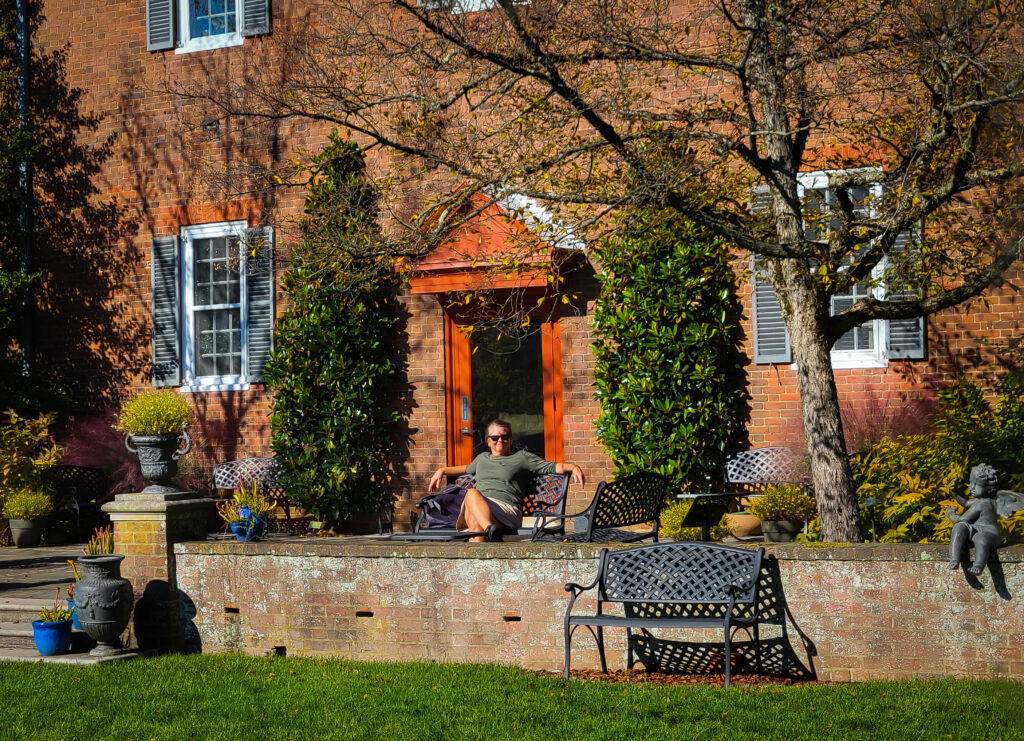
First contact
Chris and I have been members at Longwood Gardens off and on for decades, but only started going to Mount Cuba this year. Chris found out about it because she is smart and listens. After hearing about Mount Cuba from Chris, I was doing a web search on something and saw an article pop up written by a scientist from Mount Cuba. It was about planting specific native plants to host specific native insects. Later, when I went back to find the article, I found instead hundreds and hundreds of scholarly articles written by Mount Cuba scientists. What is this place, I wondered?
On our first visit this summer, we found a nice large colonial mansion that was surprisingly modest when you consider the excesses of today’s famous multi-millionaires. Behind the house is a patio with an outstanding view of green rolling hills and valleys. To one side, there is a large formal garden planted completely with a variety of native plants. Outside the garden is a walkway with Bluebird Aster bushes planted on one side and Aromatic Aster planted on the other side. When we visited again in the fall, the aster was triumphant, blazing purple in the sun.
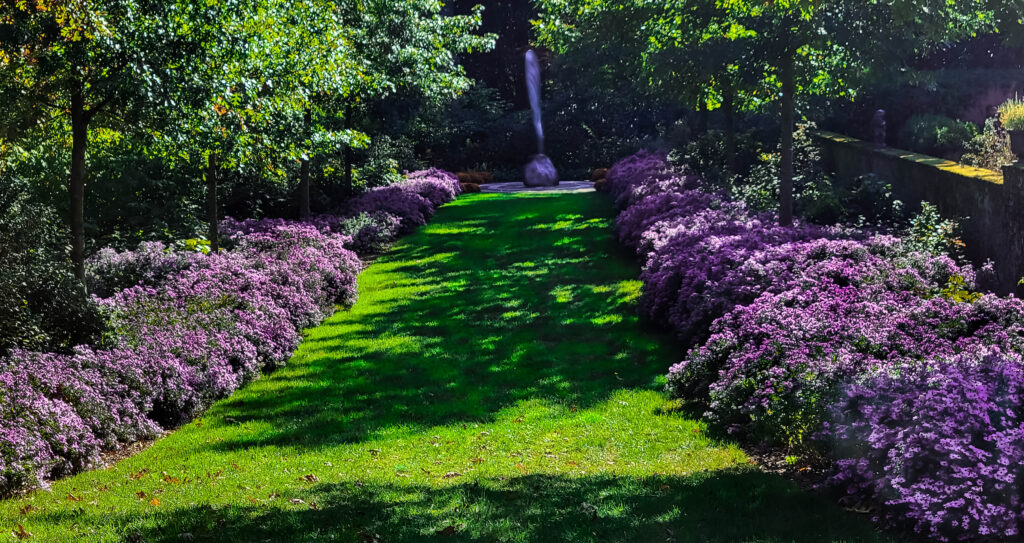
Not far from the formal garden is the Trial Garden. Here are planted the many dozens of each variety of many of the most useful native plants. So, for example, there is a row with many different kinds of goldenrod. Next to it is a bed of different kinds of bee balm. There are trial plantings that are designed to discover which variety of a native plant grows best in different conditions and which attract the most pollinators or a specific pollinator.
A nice woodland path meanders down from the Trial Garden to a pond that is surrounded by all kinds of shade tolerant plants. There are dogwoods and asters and trillium and Solomon Seal and hundreds of little gems, many of them with signs to tell you what they are and thousands of them just spread out in a natural setting. One of the docents pointed out that although the woodland gardens look very ‘natural’, it took a lot of work to get it that way and to keep it that way. Here is my take. Just because the woodland gardens were planted and cared for by humans doesn’t make them artificial. It is ‘natural’ for humans to create and care for their creations. That is how we are wired. It feels very good to walk around the woods and fields of Mount Cuba.
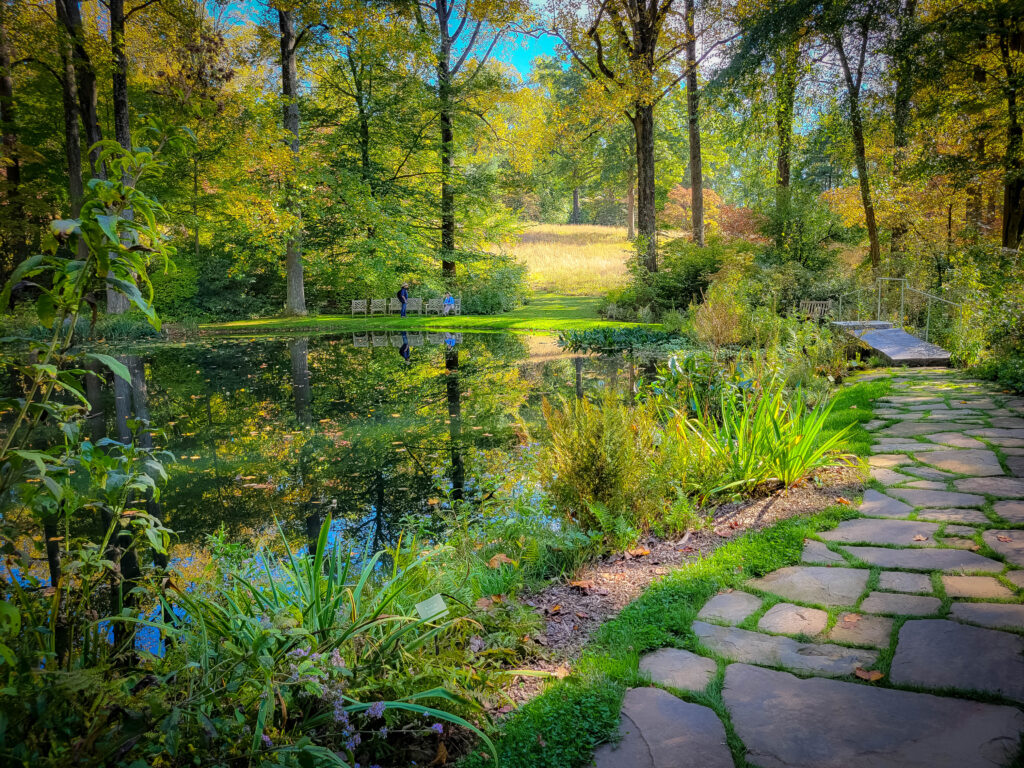
The People
It takes many people to accomplish what is being done at Mount Cuba and so far, we have met only a few of them. We have talked to some of the horticulturists who were working, and they were pleased to stop their work and help us to learn about the plants. We spent an hour with a student in Mount Cuba’s naturalist program who was doing a project identifying the many kinds of asters growing around the woodland and field paths. We met docents and also people doing guest management and memberships. Recently I called to get help on plant selection for the garden that we are putting in next spring and the call went through to the operator. We talked for a half hour about plants at Mount Cuba and then she put me through to Amy Highland, who was just as enthusiastic and also very helpful in making our final plant selections. We are going to use Bluebird Aster, Little Blue Stem grass, and Jacob Cline Bee Balm, along with a variety of milkweeds, cone flowers, Joe Pye Weed, Black-eyed Susan, and goldenrod. Thanks Amy.
Legacy Plants
The focus of Mount Cuba is very different from the gardening traditions of the previous few hundred years. The legacy approach is to showcase exotic and unusual plants that people don’t normally see. The result for a large garden is a very quiet place – there isn’t much for the animals to eat. As the exotics have escaped the gardens. they have proliferated into our still wild areas, making them quieter places too. So, what to do about the non-natives that are already growing in our yards? Professor Doug Tallamy has been extirpating them on his property but recommends a less dramatic approach in general. He suggests replacing non-natives with natives as the non-natives die off and using natives for all new plantings. That is a relief for me because we have some non-native plants that we can’t emotionally let go of just yet. And so does Mount Cuba. Here is a sign at Mount Cuba documenting their own attachment to a few cherished non-natives.
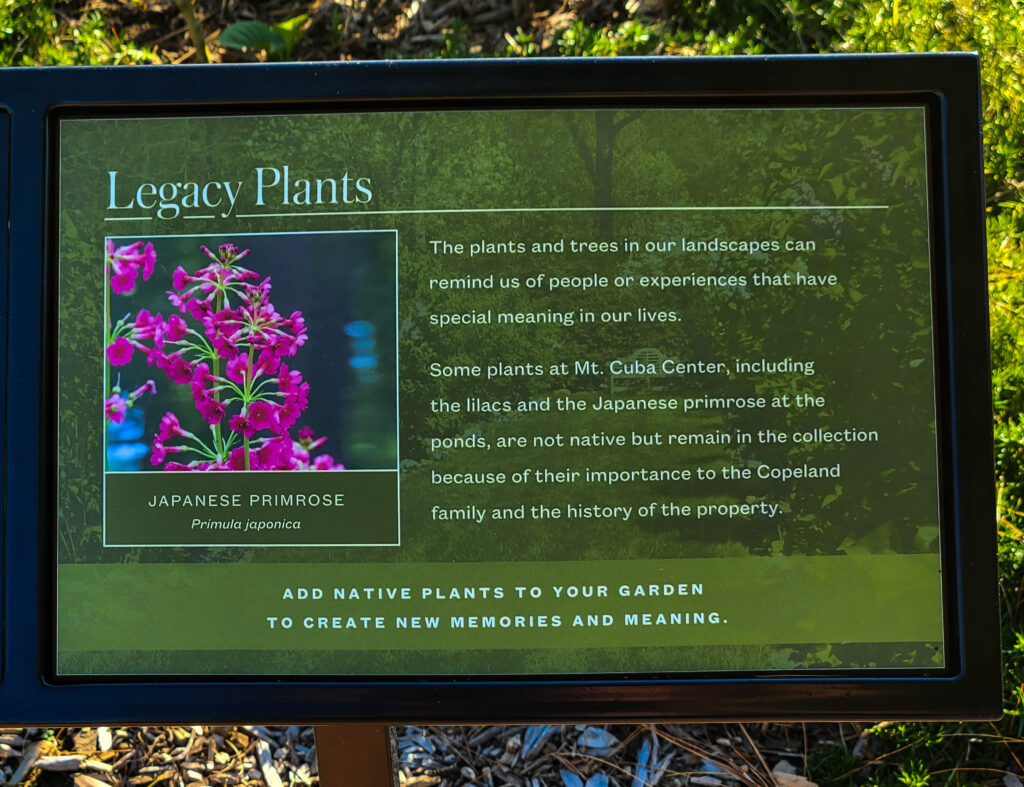
Plants eating free
There is a nice planting of carnivorous pitcher plants growing next to the pond. These have sweet smelling flowers above a bigger sticky pouch. The insects fall into the pouch and get stuck. Then the plants digest them. Below is my still picture of a wasp on one of the pitcher plants. Chris took a nice video, which can be viewed from the homepage this month or under the Videos category after that. Did the wasp get a meal and escape? I’m not saying. You’ll have to watch the video.
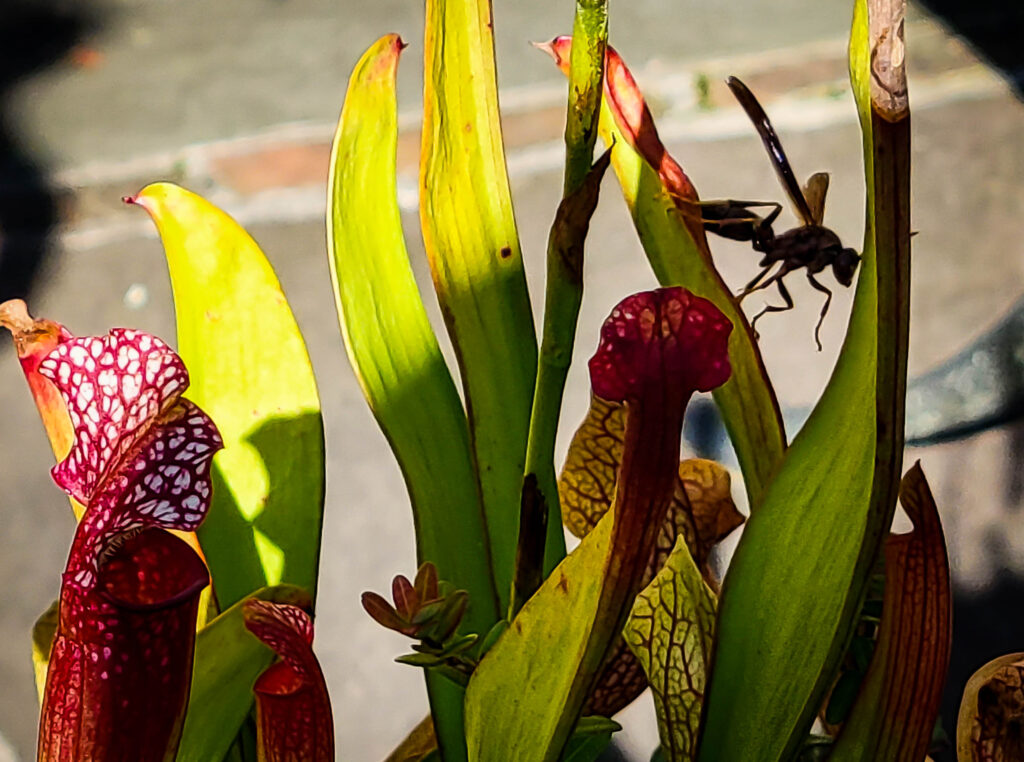
Mount Cuba Website
This is the online place to learn about native plants
Mt. Cuba Center | Gardening on a Higher Level (mtcubacenter.org)
I found the info on specific plant groups in the Trial Garden section really helpful. On the home page, click Research, then after that click Trial Garden. Link to Mount Cuba website: Mount Cuba.
A tip on directions: Don’t follow your Maps application suggestions that take you on the back roads (route 84). These are really narrow and winding. Instead, coming from the north on Route 1, keep going until you get to Route 41, and take that south through Hockessin. It is more miles and less scenic, but much easier to drive. From the south, same advice, just go north on 41.